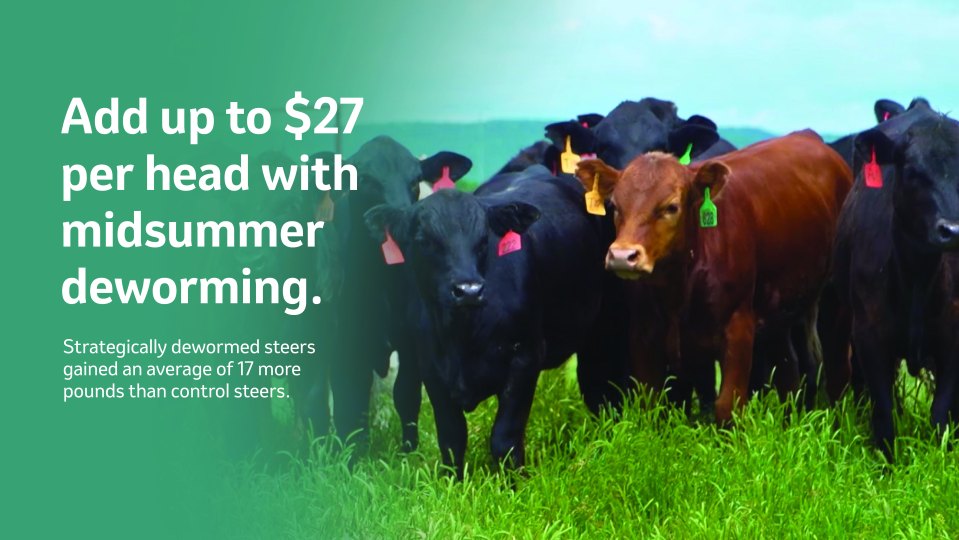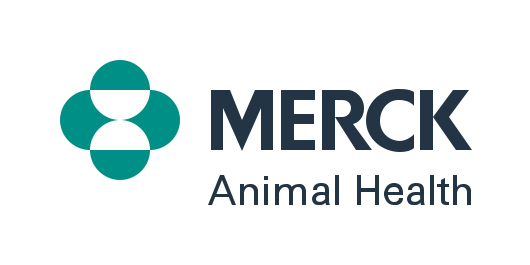Go on the offense with strategic deworming
By Wade T. Nichols
If you’ve ever been near a football field, basketball court or other sporting venue, you may have heard the phrase, “The best defense is a good offense.” Instead of taking it to the end zone, let’s take it to the pasture.
This metaphor emphasizes the power of taking a proactive approach to protect yourself or achieve your goals, rather than passively waiting for threats to arise. The same can be said for strategic deworming. Deworming at the right times can assist in providing season-long parasite control and help your cattle maximize their potential.

Strategic deworming for stockers
Implementing a strategic deworming program can reduce parasite burdens in the herd and especially on pasture. By administering dewormers at the right times, you can interrupt the parasite life cycle.
In stocker operations, strategic deworming involves administering dewormer on arrival and/or at the start of pasture green-up, when extended grass growth begins. A second treatment is given three to four weeks later and, where warranted, a third treatment three to four weeks after the second. The region’s geography, climate, and parasite load affect your deworming management decisions and approach to improving margin in your cattle. Consult your local veterinarian and/or nutritionist for best practices in your region.
Add midsummer deworming to your playbook
Research shows summer deworming improves cattle health and production. A research trial compared grazing performance and economics, parasite enumeration and pasture larvae contamination over a 99-day summer grazing period.1 Steers were divided into groups and assigned one of the following treatments:
- SAFE-GUARD® (fenbendazole) Suspension + Cydectin® (moxidectin) Pour-On given at processing only (control treatment).
- SAFE-GUARD Suspension + Cydectin Pour-On given at processing followed by SAFE-GUARD 0.5% Pellets fed on Day 29 and Day 59 of the study.
Results showed the strategically dewormed steers in Group 2 gained an average of about 17 more pounds and had 0.18-pound greater average daily gain than the control steers. Considering today’s market prices, this could result in a $23-$27 per head profit margin.
Strategic deworming reduced the parasite burdens cattle experienced and resulted in improved animal performance. At the conclusion of the study, steers in the control group harbored approximately seven times as many immature O. ostertagia nematodes, commonly known as brown stomach worms, compared to strategically dewormed steers. Strategically dewormed steers harbored significantly fewer numbers of parasites in all life stages of the brown stomach worm and reduced Cooperia, a detrimental small intestine parasite, in all stages and significantly reduced those numbers in the early L4 stage.
Using pasture management to break the parasite life cycle
Since the vast proportion of parasitism resides on the pasture, managing pasture larval contamination is one of the most critical components of controlling internal parasites. Adult cattle shed internal parasite eggs in their manure. These eggs will then hatch and progress through several larval stages until they reach an infective form. By reducing the parasite load on pasture, you reduce the likelihood of cattle ingesting those parasites and developing production and health issues associated with internal parasites.
The study also evaluated pasture larvae count. Because cattle were maintained on the same pastures throughout the study, multiple treatments with SAFE-GUARD 0.5% Pellets on pasture resulted in reduced pasture larvae contamination. Pasture nematode larval contamination was reduced by 61% on Day 84 and 33% on Day 99 in pastures grazed by strategically dewormed steers.
Save yourself a trip to the chute
Summer deworming can provide huge advantages to your herd, and it doesn’t require a trip through the chute to reap the benefits. Using feed forms of dewormers require relatively little time and labor while still being highly effective, as seen in the study above.
Additional research has shown that SAFE-GUARD feed formulations show an average weaning weight increase of 31 pounds in calves and a 16% increase in average daily gain in stocker cattle.2-9
Accurate dosing is critical to reduce resistance and ensure the dewormer is effective. It is important to follow label directions carefully and feed the proper amount required for the total number and weight of cattle being treated.
Add summer deworming to your playbook and see improvements in your pasture parasite load and more money in your wallet.
Important Safety Information
Do not use in beef calves less than 2 months old, dairy calves and veal calves. A withdrawal period has not been established for this product in pre-ruminating calves. Additionally, the following meat withdrawal and milk discard times apply:
Safe-Guard Paste: Cattle must not be slaughtered for 8 days. For dairy cattle, the milk discard time is 96 hours.
Safe-Guard Suspension: Cattle must not be slaughtered for 8 days. For dairy cattle, the milk discard time is 48 hours.
Safe-Guard EnProAl Type C Medicated Block: Cattle must not be slaughtered for 11 days. For use in beef cattle only.
Safe-Guard 20% Protein Type C Medicated Block: Cattle must not be slaughtered for 16 days. For use in beef cattle only.
Safe-Guard Type A and other medicated feed products (pellets, cubes, free-choice mineral, or free-choice liquid): Cattle must not be slaughtered for 13 days. For dairy cattle, the milk discard time is 60 hours..
References
- Data on file. Merck Animal Health. Technical Bulletin, Deworming with SAFE-GUARD® Suspension and Cydectin® Pour-On with or without Strategic Deworming with SAFE-GUARD® 0.5% Alfalfa-Based Pellets. 2024. US-SFG-231000009.
- Taylor, FT. Effects of a Strategic Deworming Program in Beef Cattle with Subclinical
Parasitism in the Western United States. BCVA Edinburgh. 1996. - Kvasnicka, WG, et al. Fenbendazole in a strategic deworming program. The Compendium. Food Ani. Parasit. 1996;18(4)113-117.
- Wholgemuth, KM, et al. Deworming Beef Cow and Calves with Fenbendazole: Effect on Weaning Weight of Calves. North Dakota Farm Research Bimonthly Bulletin. 1990;48(4)27-30.
- HRVET Study GHM/19. Cow/calf producers in the Northern Plains have wondered if parasite control can pay for itself. 1990.
- Hoechst-Roussel Agri-Vet Company. Study Number A640468.
- Hoechst-Roussel Agri-Vet Company. Study Number A640438.
- Hoechst-Roussel Agri-Vet Company. Study Number A640039.
- Keith, EA. Utilizing Feed Grade Formulations of Fenbendazole for Cattle. Agri-Prac. 1992;13(1)17.
Find more content for your beef operation.
About the author

Wade T. Nichols, Ph.D., PAS, Dipl. ACAN
Senior Technical Services Manager
Merck Animal Health
